This was published 7 years ago
Why this tiny archipelago is the Mediterranean's next big thing
By Ute Junker
Fierce knights, ancient cities, gorgeous swimming spots and the odd tortured genius: why Malta is the Mediterranean's secret hot spot.
On the tiny island of Malta, it is easy to forget where you are. Sit in one of its sunny piazzas overlooking a baroque church, and you might think you are in Italy. Cruise along a coastal road, past pretty fishing ports washed by aquamarine waters, and it feels a lot like Croatia. Wander through Roman ruins or down the narrow streets of Arab-influenced towns, and you could be in Spain.
A tiny scrap of land floating in the Mediterranean, Malta has been conquered many times over the centuries. Every occupier has left traces behind: there are Roman roads, Arab towns, Norman fortresses. With Sicily only 100km away, there is a strong Italian influence, particularly evident in the food and the locals' devout religious streak. The island's last overlords, the British, left in 1964 when Malta became independent (the country remains a member of the Commonwealth) but their legacy is particularly helpful for Australian travellers: along with Malti, English is one of the country's two official languages.
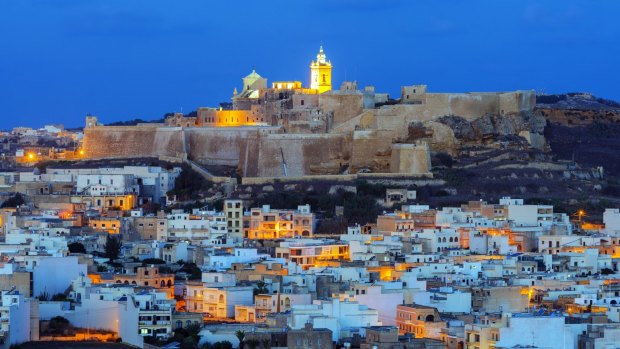
The Cittadella in Victoria, Gozo, at night.Credit: Getty Images
Communicating with the locals may be easy, but navigating the island's colourful history can be a challenge. Take the island's compact capital, Valletta. Perched on the point of a peninsula, it is one of Europe's most charming cities, its grid of steeply sloping streets lined with elegant limestone townhouses, many festooned with colourful baroque balconies.
One of Europe's first planned cities, Valletta was designed by none other than pope's personal architect, Francesco Laparelli, who combined a fine aesthetic sense with a utilitarian streak. The houses were built tall so as to cast long shadows, giving pedestrians respite from the harsh Mediterranean sun. The sculptures on the corner of each house, another compulsory measure, were a purely aesthetic consideration. But those steeply sloping streets and extra-wide stairs? Ah, they are something completely different.
Valletta, you see, was built not just a city, but a fortress. In the 16th century, Malta was ruled by one of the world's most formidable fighting forces, the Knights of St John, also known as the Knights Hospitaller. They built Valletta as their stronghold, with steep slopes designed to slow invading armies, and wide staircases to accommodate armour-clad knights.
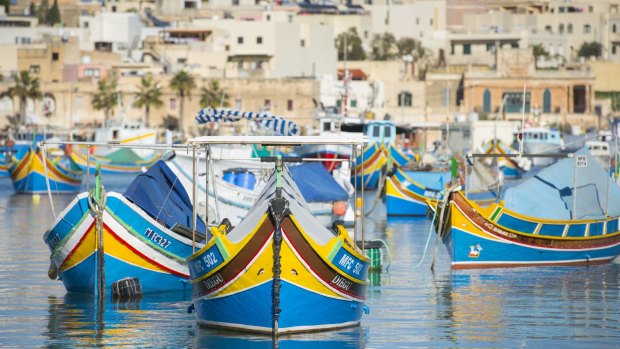
Fishing boats in Marsaxlokk harbour.Credit: Getty Images
How did an army of warrior monks end up ruling their own territory? Like the Knights Templar and the Teutonic Knights, the Knights of St John were originally a crusading order. Centuries after their counterparts had been dissolved, however, they were still going strong. Based for many years on the Greek island of Rhodes, they were driven out by the resurgent Ottoman navy under the emperor Suleyman the Magnificent. The Spanish emperor Charles V invited the homeless knights to set up new headquarters on one of the smallest patches of land in his property portfolio, Malta.
The knights duly settled on the island, boosting their coffers by raiding any passing ships belonging to the Ottomans. In May 1565, Suleyman the Magnificent decided to do something about it. He sent a fleet with more than 30,000 troops to lay siege to the island. The defenders consisted of just 700 knights, led by the order's 70-year-old Grand Master Jean de la Valette, backed by an additional force of 800, a mix of mercenaries and locals.
Crucifixes and cannonballs
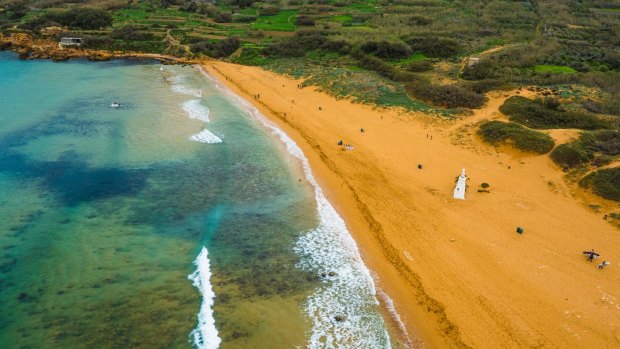
Beach, Malta.Credit: Visit Malta
The battle became of the most celebrated fights of the century. When the Turks captured the outlying fort of St Elmo, losing 8000 men in the process, they wreaked bloody revenge on the defenders. The leading knights were beheaded, their heads mounted on stakes, and their decapitated bodies nailed to crosses, which were floated across the harbour to the main force of knights.
Jean de la Valette was not so easily intimidated. In response, he ordered the decapitation of all heis Turkish prisoners, then used their heads as cannonballs, firing them at the Ottoman troops. The knights went on to drive off the Turks, but de la Valette realised that he needed better fortifications. He ordered plans for the new city that was eventually named after him, protected by massive watchtowers and bastions which still stand today.
Valletta is more than a fortress, however. Once word of the knights' valiant fight against the Ottomans got out, money and honours were showered upon the order by rulers from right across Europe. As a result, ornate churches and palaces sprung up across Valletta. With 320 monuments gathered within its 28km long walls, Valletta has the most concentrated collection of historical monuments in the world after Rome and Jerusalem.
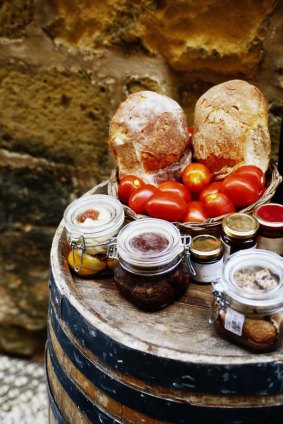
Bread, plum tomatoes and honey in Malta.Credit: Ingrid Rasmussen
The most splendid of them all is the St John's Co-Cathedral. Don't let the austere exterior fool you: inside, every surface is covered with riotous baroque decoration, from the elaborately frescoed ceilings to the walls thickly encrusted with gold leaf. Even the floor is dazzling, covered with more than 400 highly-polished tombstones of coloured marble.
As well as being a work of art in its own right, the cathedral also houses some remarkable artistic treasures. Among these are not one but two works by Caravaggio, including the massive canvas widely considered to be his masterpiece, the Beheading of St John the Baptist.
Caravaggio's sojourn on Malta is yet another improbable episode in the island's history. The most celebrated painter of his age, Caravaggio arrived on Malta a fugitive from the law, wanted in Rome on charges of murder. The Knights of St John not only offered the renegade painter sanctuary, they even made him a member of the order. He completed just two paintings, however, before he found himself in trouble again, incarcerated for brawling. Caravaggio made another of his dramatic escapes, this time heading for Sicily. Two years later he was dead, aged just 38.
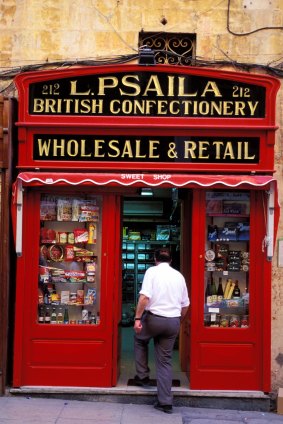
Valletta.Credit: WYSOCKI Pawel
The Co-Cathedral is not Valletta's only landmark. The nearby Palace of the Grand Master, all long corridors and vaulted arches, is another storehouse of treasures. Among the most valuable masterpieces is an exquisite set of Gobelin tapestries depicting the flora and fauna of the Americas. (Given that the animals depicted include rhinoceros and zebra, the artists were clearly a little hazy on their geography.) The tapestries did not come cheap. The Grand Master had already paid a large sum of money for the pieces when pirates seized the ship bringing them to Malta. The Grand Master paid the requested ransom, effectively paying twice for the same tapestries.
The silent city
Before the knights built Valletta, they made their headquarters in the inland city of Mdina, just a short bus ride away. A fortified citadel has stood on this spot since the Phoenicians ruled Malta, back in 1000BC. They named their city Malet, which, under the Romans, became Melita. The next invaders to come through, the Arabs who ruled Malta between 870 and 1090, called it Mdina, the name by which it is known today.
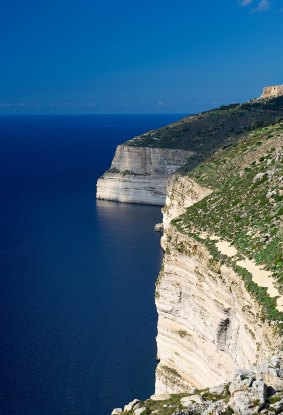
Dingli Cliffs.Credit: RenataAphotography
The city no longer sits in isolated splendour – the bustling suburb of Rabat now reaches all the way to the walls – but inside the protected enclave, a sense of tranquillity reigns. Mdina lives up to its nickname, the Silent City: fewer than 300 people still live here, and cars have been banned. Wandering its labyrinthine streets eels like travelling back in time.
Like Valletta, Mdina is a city of churches. The island's rigorous Catholic tradition – divorce was legalised a mere four years ago – dates back to 60CE, when St Paul was shipwrecked here and converted the population, making it one of the oldest Christian countries in the world.
Many churches are dedicated to local saints, including the beloved St Agatha. This third century saint fled to Malta from her home in Sicily to escape the amorous advances of the local governor. She eventually returned to Sicily, where she was imprisoned and tortured before being burnt at the stake. Maltese artists revel in depicting her story in all its gruesome details, including the moment when her breasts are removed with shears.
With only one-fifth of the country urbanised, there is much to explore beyond the two main cities. The coast swoops down from soaring cliffs to sheltered bays; the interior is rich in hiking trails, which are particularly inviting in spring, when the dry plains come alive with wildflowers. Hardcore trekkers will be drawn by the 115km coastal walk that circumnavigates the island; the rest of us, however, have plenty of shorter hikes to choose from, winding past terraced fields and citrus orchards.
Popular options include the Xemxjia heritage trail, which follows an ancient Roman road, and the Victoria Lines, a series of British fortifications stretching across the width of the island. Malta played a vital role in Britain's World War II campaign, functioning as a fortified naval base that secured the Allied supply lines across the Mediterranean.
Naturally, it came under fierce attack. Malta was continuously bombarded for 154 days and nights. (By contrast, the London Blitz lasted just 57 days.) At the end of the war, 40,000 homes had been destroyed, and the population was on the verge of starvation. King George VI recognised Malta's key role in the victory by awarding the George Cross, the highest award for civilian bravery, to the entire population.
Prehistoric treasures
Malta's extraordinary history sometimes obscures its equally rich prehistory. Its rich collection of ancient sites includes the megalithic temples at Hagar Qim, which are older than the pyramids of Egypt. Archaeologists have yet to determine how, three millennia ago, its builders were able to manipulate blocks of stone weighing 20 tonnes. The most spectacular finds at the temples, a series of figurines known as the Fat Ladies – popularly presumed to be fertility goddesses – are on display in the National Museum of Archaeology in Valletta.
Built around the same time was the spectacular necropolis known as the Hal Saflieni Hypogeum, three levels of burial chambers carved into rock and decorated with figures and spirals. About 7000 bodies are believed to have been buried here, along with personal belongings ranged from carved figurines to amulets and beads and pottery. Visitor numbers to the Hypogeum are carefully controlled; booking well in advance is essential.
While the bus network makes it relatively easy to explore the compact island, it is worth investing in a good guide who can take you off the beaten path. I spend a day with Stephen from My Maltese Guide, who shows me plenty of gorgeous spots I would otherwise have missed. We enjoy an impromptu picnic on the cliffs at Dingli, gazing out at the panoramic view, before heading to the pretty fishing village of Marsaxlokk, where seafood restaurants line the waterfront. The fleet of colourfully painted wooden fishing boats moored in the water is yet another relic of the island's long history: the eyes painted on the prow, designed to ward off evil, are a tradition that dates back thousands of years to the days of the Phoenicians.
And then there is Malta's smaller satellite, the tiny island of Gozo. Just a quick ferry ride away, tiny Gozo – or Ghawdex (pronounced aow-desh), as the Maltese know it – makes Malta feel positively bustling. Not so long ago, horse-drawn carts were the main form of transport here; even today, a slow pace of life prevails. Beyond its capital, Victoria, the main settlements are pretty hill-top villages with exotic names such as Xewkija, Xaghra and Xlendi. What they share in common: sunny piazzas centred around churches, and simple dwellings that look as if they have been lifted from a North African village.
Apart from the megalithic temples at Ggantija, Gozo's main attraction is its beaches. Perhaps the loveliest is the crescent-shaped Ramla, where aquamarine waters lap at the fiery sands. According to legend, this is where Odysseus, trying to make his way home from the Trojan War, was enslaved by the temptress Calypso. It seems travellers have been falling for Malta for an awfully long time.
TRIP NOTES
MORE INFORMATION
GETTING THERE
Direct flights to Malta are available from numerous European capitals, including London, Athens and Rome.
STAYING THERE
Skip the resort area of St Julians, favoured by British package-holiday tourists. Instead, choose one of the handful of boutique hotels in Valletta. Pick of the bunch is the stylish Casa Ellul, which has eight rooms tucked into a historic townhouse. Suite 7 comes complete with a rooftop garden and a jacuzzi.
TOURING THERE
My Maltese Guide offers private tours of Valletta and Malta. A full-day island tour tailored to your interests is recommended. mymalteseguide.com
Ute Junker was a guest of Casa Ellul and My Maltese Guide
Malta Must-Dos
Don't leave Malta without:
- Wandering the sloping streets of Valletta. Stop in at St John's Co-Cathedral and the Grand Master's Palace.
- Losing yourself in the medieval streets of Mdina, known as the Silent City.
- Visiting at least one of Malta's prehistoric sites, such as the necropolis at Hal Saflieni.
- Dive into the turquoise waters of the Blue Hole, one of the Mediterranean's most beautiful swimming spots.
- Take a day trip to the tiny island of Gozo.
Malta's masterpieces
Malta's treasure trove of masterpieces ranges from prehistoric sculptures to priceless paintings.
- Widely considered to be Caravaggio's masterpiece, his Beheading of St John the Baptist hangs in the Co-Cathedral. It was commissioned by the Grand Master during Caravaggio's stay in Malta.
- They are older than Egypt's pyramids, but the voluptuous fertility statues found in Malta's Neolithic temples brim with life. See them at the National Museum of Archaeology.
- It has received considerable acclaim from experts, but local opinion is divided about the Valletta's new City Gate, along with the adjoining Parliament Building and open-air theatre, designed by starchitect Renzo Piano.
- The Graduals of L'Isle Adam, exquisite choral manuscripts used for chanting for mass, feature hand-painted miniatures and gold-leaf decoration, and are on display at the Co-Cathedral.
- The Gobelin tapestries hanging in the Palace of the Grand Master are considered to be among the most valuable sets anywhere in the world.
Where to eat
Malta's Mediterranean cuisine is a delight. Look for local specialties such as rabbit, bragioli (beef in red wine) and the local cheese.
It has one of the best views on the island, thanks to its location amid Valletta's sturdy bastion walls, but Rampila's mod-Med cuisine is an attraction in its own right. St John Cavalier Street, Valletta, rampila.com
Tucked into the winding alleys of Mdina the town, Medina the restaurant offers courtyard dining in summer and a toasty fire in winter. 7 Holy Cross Street, Mdina, medinarestaurantmalta.com
Try the Maltese take on pizza, the thick-crust ftira, at the family-friendly Nenu the Artisan Baker. Toppings on his fresh-from-the-oven ftira include capers, Gozitan cheese and olives. 143 Dominic St, Valletta, nenuthebaker.com
Marsaxlokk is the place to eat fresh-off-the-boat seafood, and the family-run Ir-Rizzu is a favourite with locals. If it is in season, try the lampuki, or dolphin fish. 52 Xatt is-Sajjieda, Marsaxlokk, ir-rizzu.com
Most Maltese restaurants are shut on Sundays, but Legligin, tucked into a cosy cellar, is an exception. This is old-school Maltese cooking, with tasty mezze to start followed by a selection of slow-cooked dishes. 119 St Lucy Street, Valletta, facebook.com/legligin-valletta
Sign up for the Traveller Deals newsletter
Get exclusive travel deals delivered straight to your inbox. Sign up now.